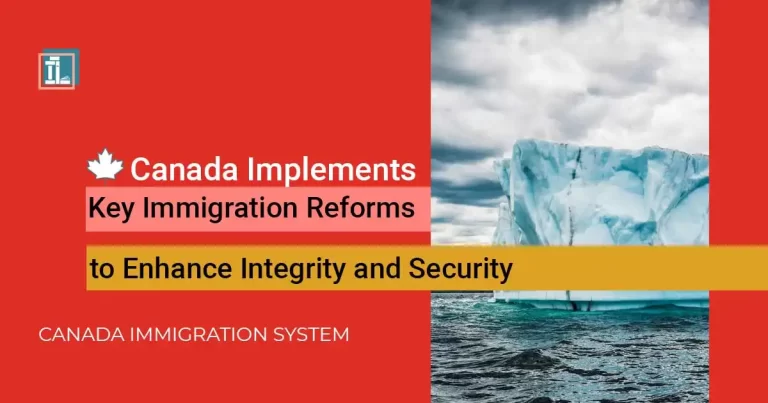1. Atlantic Immigration Program (AIP)
Overview:
The Atlantic Immigration Program (AIP) (➨page) is designed to help skilled workers and international graduates settle in Atlantic Canada. This program does not use a point system and offers a straightforward pathway for those with a job offer from an employer in the Atlantic provinces.
Key Criteria:
- Minimum Language Requirement: CLB 4.
- Minimum Education Requirement: A 2-year post-secondary diploma or degree from a recognized institution.
- Work Experience: Not required for international graduates.
- Job Offer: Must be in TEER categories 0, 1, 2, 3, or 4, and last for at least one year from the date permanent residence is granted.
- Expression of Interest (EOI): Not required.
Best For: Graduates who have secured a job offer from an employer in Atlantic Canada and prefer a straightforward, non-point-based immigration process.
2. Canadian Experience Class (CEC)
Overview:
The Canadian Experience Class (CEC) (➨page) is one of the most popular pathways for international graduates with Canadian work experience. It operates through the Express Entry system, where candidates are ranked based on the Comprehensive Ranking System (CRS).
Key Criteria:
- Minimum Language Requirement: CLB 7 for TEER 0 or 1, and CLB 5 for TEER 2 or 3.
- Minimum Education Requirement: None specified.
- Work Experience: 12 months of full-time work experience in Canada in TEER categories 0, 1, 2, or 3.
- Job Offer: Not required.
- Expression of Interest (EOI): Required through the Express Entry system.
Best For: Graduates who have gained at least one year of Canadian work experience and want to leverage it to obtain permanent residency through a competitive ranking system.
3. Federal Skilled Trades Program (FST)
Overview:
The Federal Skilled Trades Program (FST) (➨page) is tailored for individuals with experience in skilled trades. This program also operates through the Express Entry system and does not rely on a point system but does rank applicants based on the CRS.
Key Criteria:
- Minimum Language Requirement: CLB 5 for speaking and listening, CLB 4 for reading and writing.
- Minimum Education Requirement: None specified.
- Work Experience: Two years of full-time work experience within the last five years in a skilled trade under key groups of TEER 2 or 3.
- Job Offer: Required, either in the form of a full-time offer for at least one year or a certificate of qualification in the skilled trade.
- Expression of Interest (EOI): Required through the Express Entry system.
Best For: Graduates with experience in skilled trades who have a job offer or certification in their trade and are seeking permanent residency through a trade-specific pathway.
4. Federal Skilled Worker Program (FSW)
Overview:
The Federal Skilled Worker Program (FSW) (➨page) is a point-based system that evaluates candidates based on factors like language proficiency, education, work experience, and adaptability. This program is also managed through the Express Entry system.
Key Criteria:
- Minimum Language Requirement: CLB 7.
- Minimum Education Requirement: High school diploma or equivalent.
- Work Experience: 12 months of continuous, full-time (or equivalent part-time) work experience in TEER categories 0, 1, 2, or 3.
- Job Offer: Not required.
- Expression of Interest (EOI): Required through the Express Entry system.
Best For: Graduates with strong language skills, higher education, and relevant work experience who prefer a point-based system that considers a range of factors for permanent residency.
Ready to take the next step towards your Canadian immigration journey? Fill out the form below and embark on your path to new opportunities.
5. Provincial Nominee Program (PNP)
Overview:
The Provincial Nominee Program (PNP) (➨page) offers several streams across Canada, allowing provinces and territories to nominate individuals based on their specific labor market needs. Requirements vary widely depending on the province and the specific PNP stream.
Key Criteria:
- Minimum Language Requirement: Varies by program.
- Minimum Education Requirement: Varies by program.
- Work Experience: Varies by program, but generally includes all TEER categories.
- Job Offer: Often required, depending on the program.
- Expression of Interest (EOI): Often required, depending on the program.
Best For: Graduates with ties to a specific province or territory who meet the unique requirements of that region’s labor market and want to pursue a tailored pathway to permanent residency.
6. Rural and Northern Immigration Pilot (RNIP)
Overview:
The Rural and Northern Immigration Pilot (RNIP) (➨page) is a community-driven program that aims to spread the benefits of economic immigration to smaller communities. Each participating community has its own specific requirements, and the program is designed to attract graduates to settle in rural areas.
Key Criteria:
- Minimum Language Requirement: CLB 6 for TEER 0 or 1, CLB 5 for TEER 2 or 3, CLB 4 for TEER 4 or 5.
- Minimum Education Requirement: Not specified.
- Work Experience: One year within the last three years in a skilled trade under key groups of TEER 2 or 3. International students who studied in the community may be exempt from this requirement.
- Job Offer: Required from an employer in one of the participating communities.
- Expression of Interest (EOI): Not required, though each community may have its own system.
Best For: Graduates who are open to living and working in smaller, rural communities and who have a job offer from a participating employer.
Ready to take the next step towards your Canadian immigration journey? Fill out the form below and embark on your path to new opportunities.
Conclusion
Connect With Us Today
Don’t let this opportunity slip away. Begin your journey towards realizing your Canadian dreams with the Immigration Pathways for International Graduates. Let’s collaborate to make your entrepreneurial aspirations a reality.
Ready to take the next step towards your Canadian immigration journey? Fill out the form below and embark on your path to new opportunities.




